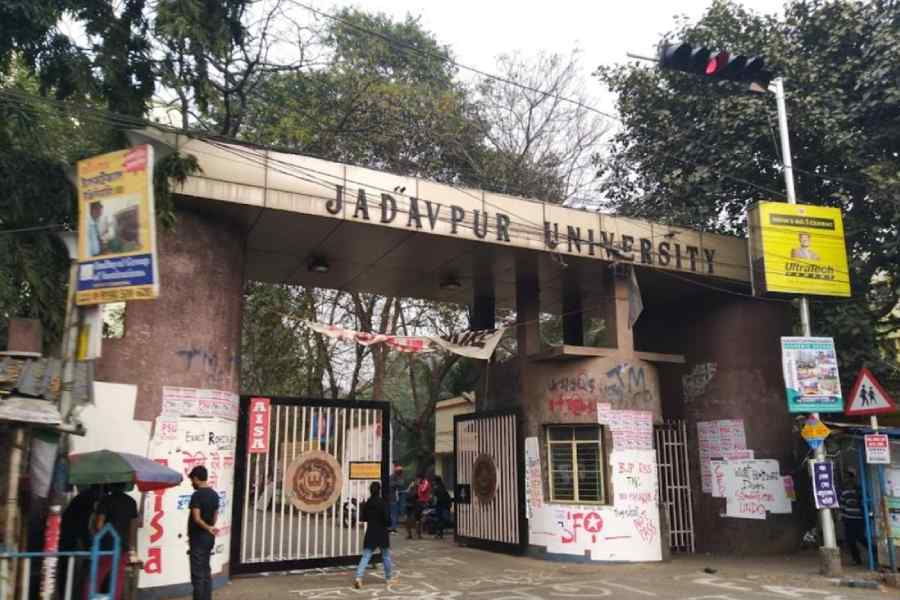Last month, Donald Trump and several other Republican presidential candidates called for the deportation of international students in the United States of America who have expressed support for Palestine or criticised Israel’s military response in Gaza. Donors, including Jewish philanthropic organisations, severed financial ties with major private universities in response to what they have described as the institutions’ lack of explicit support for Israel. The Florida governor, Ron DeSantis, called on all affiliated institutions to deactivate their Students for Justice in Palestine chapters and investigate whether chapters of the SJP were supported by a foreign terrorist organisation.
The fatal blitz of violence that has flared in the Middle East since October 7 has sharpened political polarisation in American campuses to threatening levels. But the mercury of this threat has been high for a while, as anyone following the attacks on Critical Race Theory in US schools and colleges knows well. A total of 44 states have taken measures or are considering ways of restricting the teaching of CRT in schools and colleges. And it’s not merely a post-Trump phenomenon. I recall the fevered atmosphere from my own student days on a US university campus in the years following 9/11 when the conservative writer and activist, David Horowitz, came out with his incendiary book, The Professors: the 101 Most Dangerous Academics in America, a hall of shame/fame (depending on your perspective) of the most radical-Left professors in American universities, who, according to the author, were destroying the nation’s fabric. Praising the book as revealing the story of “almost any campus in America”, the former Congressman, Jack Kingston, the sponsor of the congressional resolution for an Academic Bill of Rights, wrote: “Parents know college professors ‘tend to be liberal’ but they don’t realize how truly anti-middle class and anti-American they can be.”
Educationists such as Clark Kerr and David Larabee have variously pointed to the humble, local origins of the American institutions of higher education which have nourished its deep community connections and the popular support behind it, enhanced through the bonding of alumni-outreach and the festivity of collegiate and intramural athletics. Legislative measures such as the Land-Grant Acts and the G.I. Bill supporting free college for returning soldiers also deepened the mass-appeal of college in the US. But those were 19th and 20th century phenomena and, now, in the second decade of the 21st century, that pact of faith between the general American populace and its institutions of higher education seems to be broken. While the practical matter of skyrocketing tuition fee has had much to do with this, an inevitable ideological force behind this disruption is the perception of college as the place for dangerous liberal ideas.
When did this pact break? Vietnam? The tumultuous years of second-wave feminism, student activism, civil rights and Black Panthers with Ronald Reagan as California governor? It’s hard to tell. From my own American university years, I just remember that standing formula of student politics — Republican in the freshman year, Democrat as a senior, the four years of college enacting a progressive Leftward arc.
The fire in Palestine has brought many eyes to the storms brewing across US campuses where the support for free speech allowing criticism of Israel has always come under heavy pressure from wealthy, pro-Israel donors and political repercussions from pro-Israel lawmakers. But a breach of trust between nation and university, following a perception of the campus as a place of dangerous Left radicalism, has been a deeply polarising reality in India for several years now. In a country of wide poverty and large-scale illiteracy, a pact of trust between the nation and its universities might feel like a fantasy. But in reality, the Nehruvian socialism that shaped the Indian landscape of higher education, offering an admittedly uneven, colonial-style education at low cost — in arts and sciences as well as in the professional fields — had, through the post-Independence decades, created the semblance of a continuum between the people and their universities. For instance, even the turbulent Naxalite years of the late 1960s and the 1970s that I recall from my parents’ youthful memories did not seem to dislodge Presidency College or the University of Calcutta from their place of sanctity
in the Bengali middle-class consciousness.
It is not a coincidence that the rapidly widening gulf between India and its universities has cracked into being since the fateful year of 2014. I’ve never heard of Presidency in 1971 being described as ‘anti-national’. Jawaharlal Nehru University in 2016? JNU the prime ANU, the Anti-National University, and so it continued till it became the place where Rashtriya Swayamsevak Sangh cadre hold their march with saffron flags and sticks, in their full regalia of white shirts and khaki pants, singing to wake up Hindus. Three major universities that grew outside the British colonial model of affiliating collegiate systems — JNU, Hyderabad Central University, and Jadavpur University — were quickest to catch the ‘anti-national’ logo, with particular suspicion reserved for Jamia Millia Islamia that simmered to a frantic fever during the anti-CAA protests.
When the partner of a colleague told me that they avoided using the Ashoka University parking permit in their car for fear of drawing unwanted attention from ANU-haters, I didn’t know whether to laugh or cry. The new age private university with its hefty price tag and air-conditioned interior is scarcely a paradigm of radical anti-establishment thought. Anyone who has the slightest familiarity with the student bodies in India’s public universities, particularly the rural students in the erstwhile JNU and the IITs, know that the radical critique that was once organic on those grounds is a far cry in the pricey private universities, notwithstanding their honest attempts to diversify their student bodies. It says much about the nation, its elected guardians, and their mass of supporters that the mere articulation of liberal thought — an occupational hazard in a liberal arts university — earns it the title of ‘private JNU’ or ‘prime private ANU’ — take your pick. The modern Indian university, notwithstanding its British origin in the 19th century, augured social reform, democratic thought, and even anticolonial struggle. Its distance from a great vocal mass of people says much about the state of democracy in the nation today.
Saikat Majumdar is Professor of English and Creative Writing at Ashoka University










